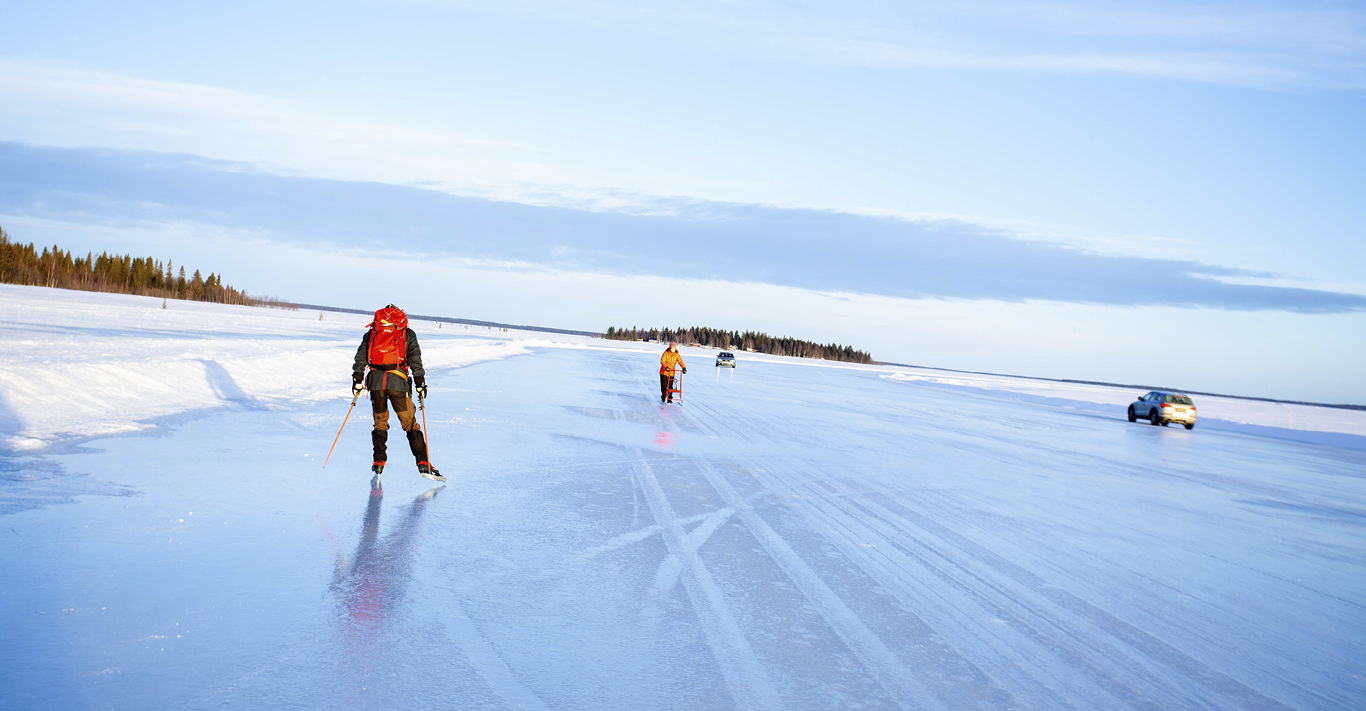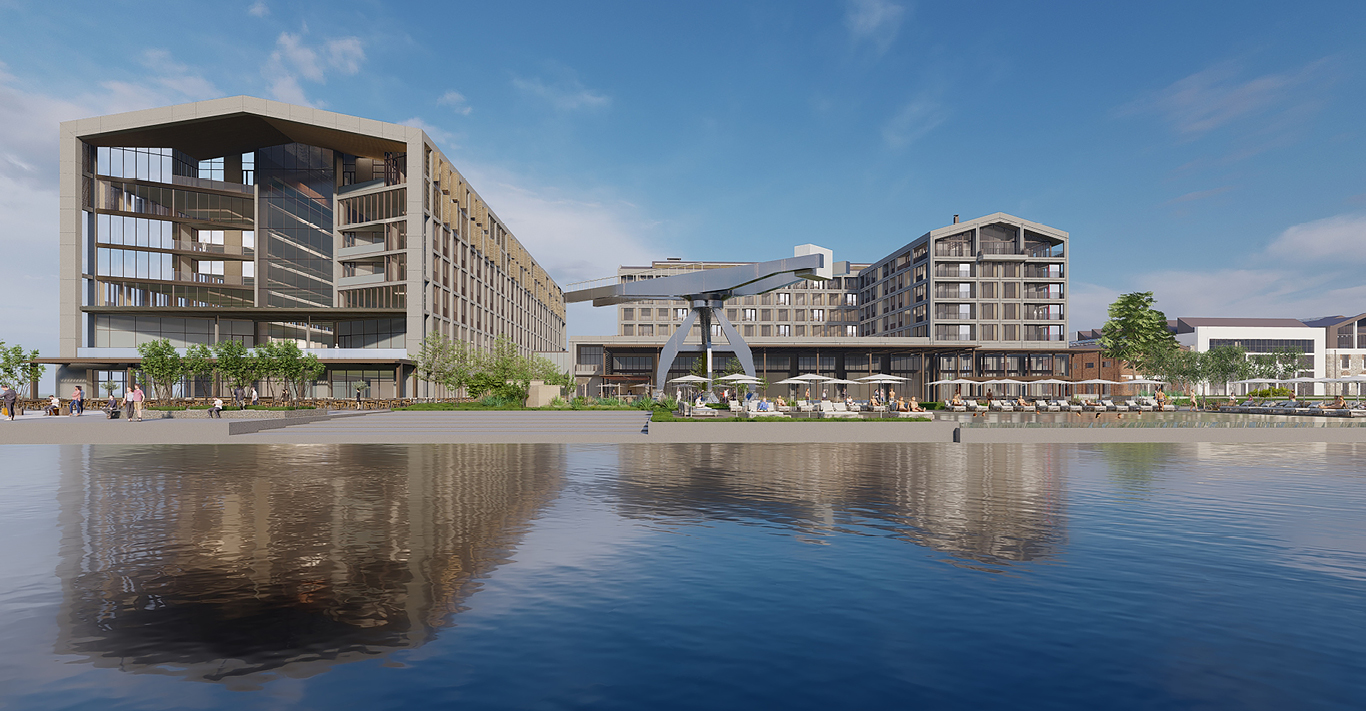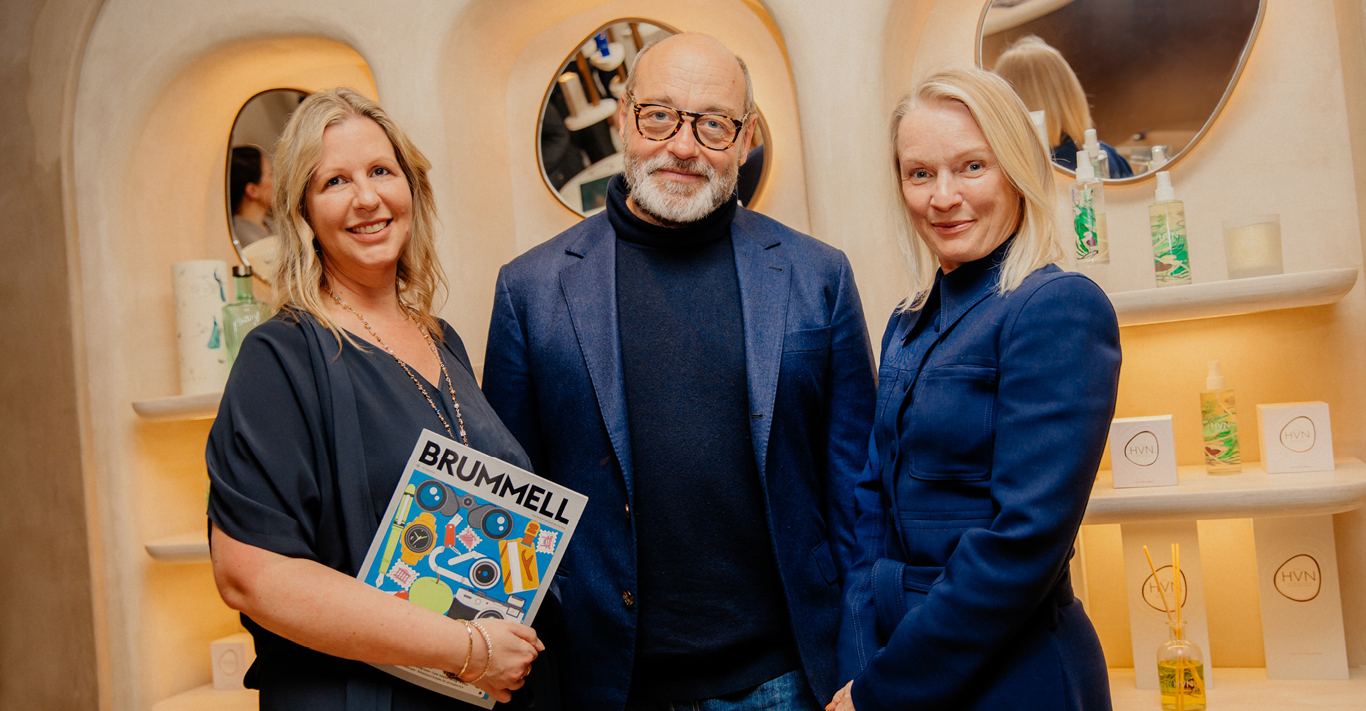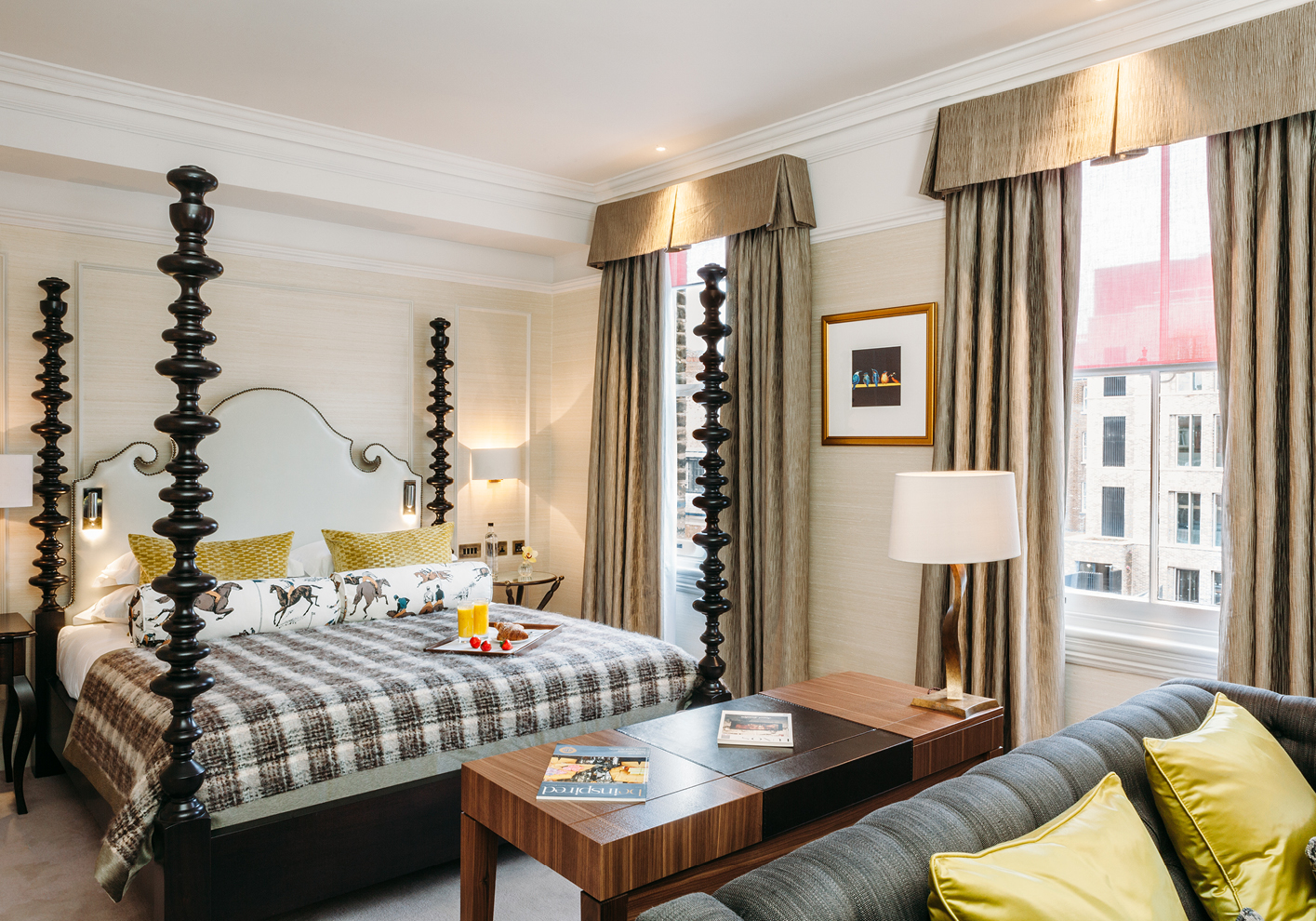WORDS
Ian Belcher
Notes on my checklist for my leisurely drive to devour waffles: vehicle weight under two tonnes? Tick. Maximum speed 19mph? Tick. Seat belt unbuckled? Er, tick.
That last one focuses the mind. I’m about to drive a Toyota 4WD onto the frozen Baltic Sea in the Bay of Bothnia – the slender armpit between Sweden and Finland – where, should my car plunge through the icy crust, I’ll need to make a high-speed escape. Clunk click my belt and I’ll be breaking the law – and risking my life.
It doesn’t help to have an over-active imagination. I really shouldn’t end up on the refrigerated seabed. Before opening its annual winter ice roads – a 16-mile-long web connecting four islands to the mainland – Luleå’s local authority carries out meticulous checks. Holes are drilled every 50 to 100 yards along to confirm the frozen surface is at least one foot deep.
Once the routes receive the green light, usually in early February, regular car insurance is valid on the ice. The sub-zero highways then receive daily inspections. Serious cracks, perhaps due to sporadic melting, may see vehicle weight allowances halved. That’s unlikely. Instead, swept regularly by snow ploughs, the roads should, as locals say, ‘grow in thickness and in health’ until spring’s thaw.
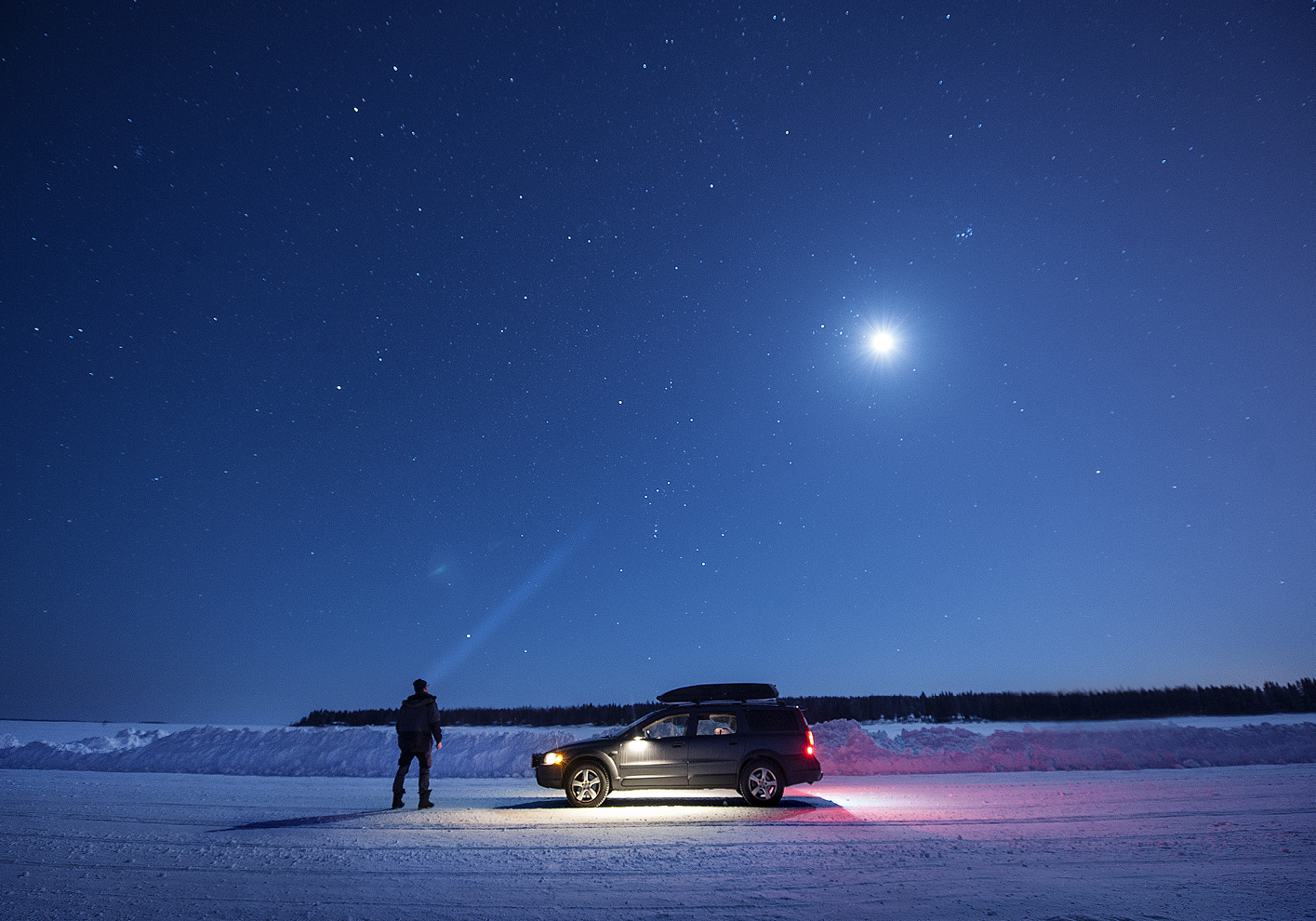
The truth is I could ride a snowmobile across the frozen bay outside my lodge to Hindersön island in 25 minutes – far faster than driving a car around the coast to access the seasonal road. But mere convenience would sabotage a unique experience. Luleå has Europe’s last remaining sea ice roads with recent mild winters scuppering those once built over Estonia’s Baltic archipelago. I’m witnessing a vanishing tradition. Who knows how climate change will affect the Bay of Bothnia over coming decades?
Global warming seems a distant concept as we set off. A 40mph-gale hammers horizontal snow across our path. With visibility deteriorating Göran calls ahead to Jopikgården, the waffle restaurant. ‘The wind’s crazy,’ he sighs. ‘There aren’t many locals out. They are tough but they are not stupid.’
I’ll try not to take offence. After Lövskär, landing point for the vendace whose eggs become Kalix löjrom, the ‘King of Caviar’ served at Nobel banquets, we stop before a splatter of signs by the road’s entrance barrier. The warning to stay 50 yards behind the nearest vehicle is irrelevant on this savage, lonely day.
After unbuckling seat belts, we stick religiously to the 19mph speed limit. Any faster and the car’s weight generates a bow wave beneath the ice, risking dangerous cracks. Our satellite app reveals the Bay of Bothnia, hit by a storm surge from the southern Baltic, is 30 inches above its normal level. You simply wouldn’t know as our tyres, studded for hard-packed snow, roll smoothly along the 60-yard-wide road.
As the mainland vanishes in my rearview mirror, I spot a side track, opened by locals to connect their small island to the main Hindersön artery. I’m so astounded anyone would risk creating a private road across the frozen sea that I miss the fact we’ve been swallowed alive by the Big White. Tupperware sky and pancake-flat ice meld together, with sudden gusts suggesting a violently shaken snow globe: a perfect setting for a taciturn, Scandi-noir detective with a marriage on the rocks and a psychopath on the loose. ‘You feel very small out here,’ whispers Göran. ‘Nature is clearly in charge.’
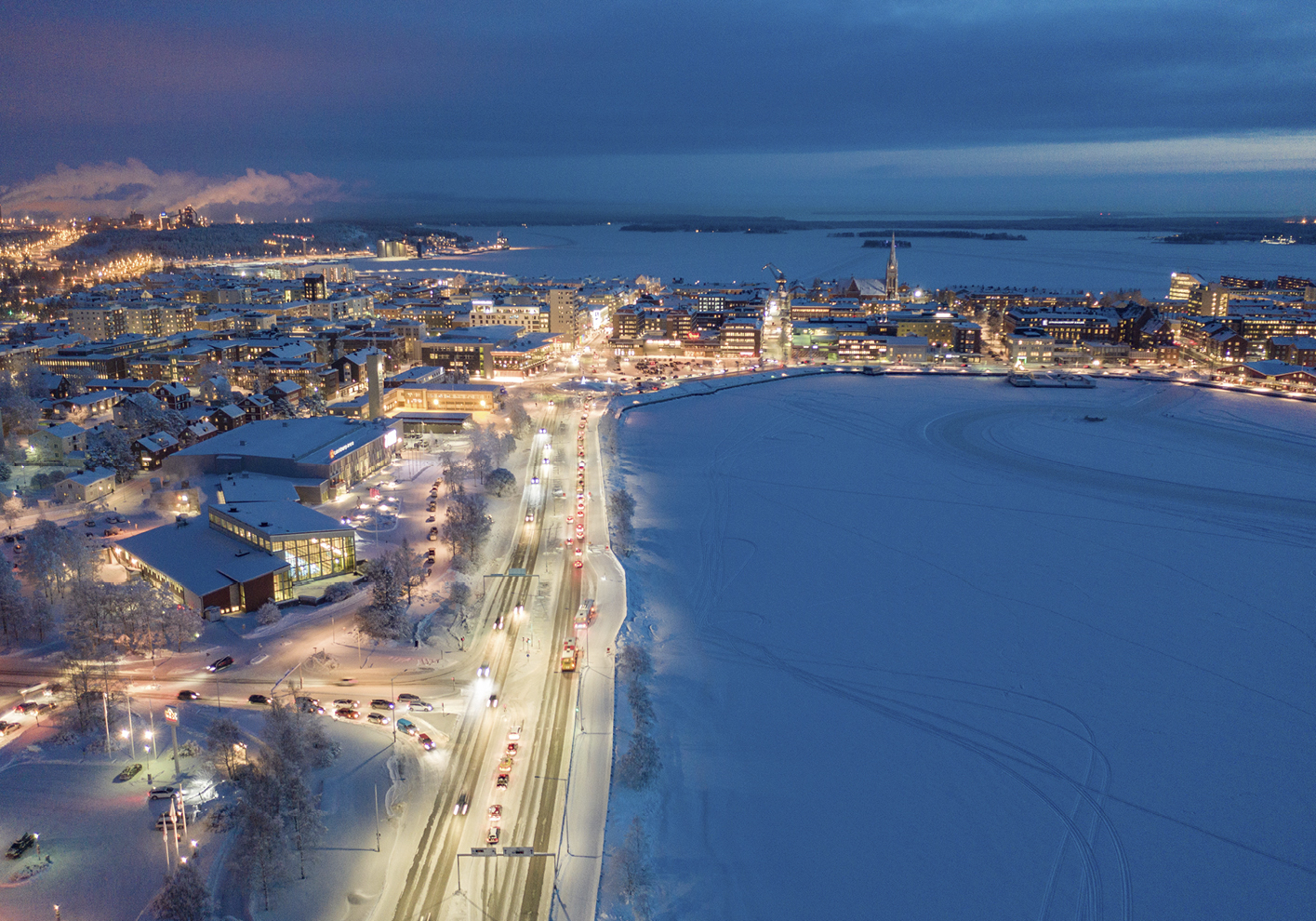
Two miles from Hindersön’s shoreline I’m startled to spot a line of Christmas trees sprouting out of the Baltic crust – a bizarre navigation aid, jammed into the ice to mark a parallel snowmobile track. Bang on cue, a snowmobile enters stage left, just as a solitary car turns onto the road from the forested island. ‘Damn,’ deadpans Göran, ‘a traffic jam.’
Another call reveals Jopikgården, with no customers, has now closed. Timing is everything. Instead of waffles we are presented with hospitable locals. Rolf Persson, 66, is a robust advert for island life. He lives just around the bay from a reclusive fisherman called Odd. I sense a Louis Theroux documentary coming on.
As we sip hot chocolate, Rolf talks about his serene existence, including weekly drives along the ice road to the mainland for supplies and beer. ‘It’s hard to live here without alcohol,’ he admits. How long has he been on Hindersön? ‘I don’t know. Time stops when you move to the islands. You don’t count.’
But you do hunt. Rolf, who pursues arctic hare, fox and moose, proudly shows me the magnificent antlers of a 714-pound specimen decorating his cabin wall. Hindersön’s 20 locals are clearly a hardy lot. I drive home contemplating his nonchalant description of his septuagenarian neighbour’s recent cardiac arrest. ‘He jumped on his snowmobile and drove across the ice to hospital. He’s fine.’
So are we, particularly after carb-laden comfort snacks by a waterfront firepit back in Luleå. Directly in front of us another road crosses the frozen harbour. This one’s for leisure rather than winter survival. ‘You spot strange things out there,’ says Göran. ‘People skating while pushing prams or skiing while towing children on a sledge.’ Next week hundreds of Dutch skaters, whose canals now rarely freeze, will arrive for their annual race.
Strange sights also dominate my final afternoon. I catch a small hovercraft to the edge of the ice sheet, 12 miles offshore. Slabs of frozen brine rise like abstract sculptures alongside hundreds of seals and two huge sea eagles fighting over freshly caught salmon. The thin crust flexes beneath my feet. It would never support a snowmobile, let alone a car – and don’t even think about motor insurance – but it’s final conclusive proof that there are few places more unique, surreal and thrilling than winter’s frigid Bay of Bothnia.
From £1,323pp for three full-board nights including ice excursions and transfers (the hovercraft is £192 extra per person); discover-the-world.com. Direct flights to Luleå from £379pp; flysas.com
Images: Jacob Nilsson; Fredrik Broman


